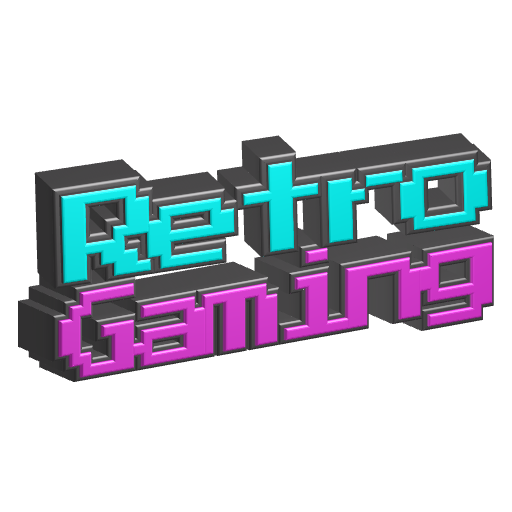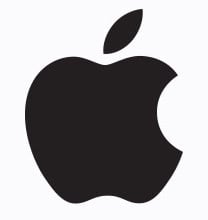This shouldn’t even be a question lol. Even if you aren’t worried about theft, encryption has a nice bonus: you don’t have to worry about secure erasing your drives when you want to get rid of them. I mean, sure it’s not that big of a deal to wipe a drive, but sometimes you’re unable to do so - for instance, the drive could fail and you may not be able to do the wipe. So you end up getting rid of the drive as-is, but an opportunist could get a hold of that drive and attempt to repair it and recover your data. Or maybe the drive fails, but it’s still under warranty and you want to RMA it - with encryption on, you don’t have to worry about some random accessing your data.
- 3 Posts
- 53 Comments

 53·7 months ago
53·7 months agoAlthough not the same, this has been going on for about two years now. Jensen Harris, a former MS engineer, criticized the ads as well as the design of the new Start Menu, over here: https://threadreaderapp.com/thread/1564399431545667585.html
Starts with a T and ends with an a?

 17·8 months ago
17·8 months agoSyncthing, it was made exactly for situations like this. And unlike DropBox etc your data stays local.
Mercury is worth checking out - it’s based on Librewolf but has additional privacy and performance patches.

 3·9 months ago
3·9 months agoAnd refactor the code a bit to be on the safe side - change the name of the project and remove any references to litigious companies. And use an anonymous handle + VPN/proxy chains so they can’t sue you.
Honestly it boggles my mind that devs contribute to emulators like these using identifiable names and traceable IPs, when everyone knows how these greedy corporations operate. Did no one learn anything from the Sony vs Geohotz case, or all the subsequent takedown against emulators? Why do these devs keep falling into the same trap again and again?

 1·9 months ago
1·9 months agoAh, if you’re interested in Steam games as well then look no further than Bazzite - it’s got all the optimisations that Valve put into SteamOS + more (like more recent kernel and drivers). But before you switch though, you might want to check whether your Steam games are compatible using this website: https://www.protondb.com/

 9·9 months ago
9·9 months agoGet some decent CRT shaders and spend some time calibrating your display and setting them up correctly - it makes a massive difference IMO. Personally, I’m a big fan of the “Megatron Death To Pixels” shaders, check out this video on how to set it up properly.
My goal is to eventually have a “pick up and play” setup
For that, I’d highly recommend switching to a gaming/emulation-oriented Linux distro, such as Bazzite with Emudeck, ChimeraOS, Batocera, Lakka etc. I personally prefer Bazzite due to it’s Steam-first approach and excellent compatibility with various controllers and proprietary drivers (nVidia), but Lakka might be better if you’ve got an Intel iGPU or an AMD card, and want to stick purely to retro gaming - it’s the official distro for RetroArch afterall, so it’s very polished in that regard, and very lightweight.

 4·10 months ago
4·10 months agoI hope you didn’t forget that banger of a soundtrack!

 4·10 months ago
4·10 months agoAs an MSDOS and platformer fan:
- Dangerous Dave (1990 version)
- Prince of Persia 1 & 2
- Crystal Caves
- Bio Menace
- Commander Keen series (keen 4 being the best)
- Jazz Jackrabbit series
- Jill of the Jungle
- Aladdin
My favorite from the above would be Bio Menace, followed by Dangerous Dave, Prince of Persia 1 and Jazz Jackrabbit.
Most of these games should be available on GOG, if not, search for “eXoDOS”.

 2·1 year ago
2·1 year agoYep it does restore application state as well, but it’s a bit of a hit-and-miss. Notepad is restored surprisingly well - including unsaved text and multiple windows; Firefox and Edge browser tabs are restored; unsaved Word docs are restored as well but oddly enough, Outlook’s state isnt restored (although it does save any unsaved drafs).
I’m guessing some sort of resume/restartable support is needed from the app as well for this to work properly. I imagine modern “UWP” apps would just work, but some additional coding might be needed for traditional win32 apps. Like Adobe Reader for instance, it doesn’t get restored at all.

 5·1 year ago
5·1 year agoThis is incorrect…ish. Windows, yes even 10, has had a feature for a while now called Automatic Restart Sign-on (ARSO). You can enable this feature by going to
Settings > Accounts > Sign in options > "Automatically save my restartable apps and restart them when I sign back in".After enabling it, a reboot will restore… some apps (hence the ‘ish’), these apps being mostly Microsoft apps (Edge, Word, Outlook, Notepad etc) + some third-party apps (I know Firefox gets restored, not sure about others).
You can also use the
shutdown /gcommand to test this (after enabling ARSO):/g Fully shuts down and restarts the computer. On restart, if Automatic Restart Sign-On is enabled, the device automatically signs in and locks based on the last interactive user. After sign in, it restarts any registered applications.https://learn.microsoft.com/en-us/windows-server/administration/windows-commands/shutdown

 19·1 year ago
19·1 year agoI wouldn’t say it didn’t get a chance to shine (unless you’re being pedantic and referring strictly to the official spec) - it’s various implementations such as DivX and XviD were widely used and extremely popular on the web back then. Yes, even though DVDs and DVD writers became common, internet speeds were still too slow and uncapped internet was fairly uncommon, so most people preferred to download those 700MB rips. In fact, aXXo’s 700MB XviD rips were extremely popular due to their relatively high quality for those sizes, and anyone who’s sailed the high seas back then would tell you that DivX/XviDs generally had the highest seeds for any given video, thereby indicating their popularity.
DivX-certified media players were also a thing for this very reason - and they weren’t even obscure, pretty much every popular HT OEMs had DivX-compatible players - eg Samsung, Toshiba, Sony, Philips, Pioneer etc. And this was back in the early 2000s, so I wouldn’t say that the support came “rather later”. DivX (the first official release, not the bootleg version with the winky face), along with XviD, were born in 2001, and certified hardware players followed only a couple of years later. But don’t forget that HTPCs were also a thing back then, heck, they date back to the late 90s when PC makers started selling PCs with TV tuner or “combo” cards buit in, and I recall them being specifically marketed as HTPCs. Even after DVD players became cheap and popular, HTPCs were still preferred by the enthusiast crowd due to better video quality, wider codec support and flexibility. Essentially, playing ASPs was never really a big deal for people who consumed the format.
So overall, I’d say that ASP not only shined, it dominated. Without ASP, groups like aXXo would’ve probably not existed, and the scene would’ve looked very, very different.
This worked, thanks!
406 Not Acceptable

 1·1 year ago
1·1 year ago@WestwardWind@lemm.ee SwiftKey on Android also supports moving the cursor in all directions.
Article is paywalled. :/





It’s easiest to just register a domain name and use Couldflare Tunnels. No need to worry about dynamic DNS, port forwarding etc. Plus, you have the security advantages of DDoS protection and firewall (WAF). Finally, you get portability - you can change your ISP, router or even move your entire lab into the cloud if you wanted to, and you won’t need to change a single thing.
I have a lab set up on my mini PC that I often take to work with me, and it works the same regardless of whether it’s going thru my work’s restricted proxy or the NAT at home. Zero config required on the network side.